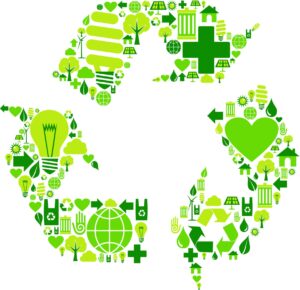Sustainability
Andries Gaastra has an impressive track record. How does he view the future of our industry based on his knowledge and expertise? Well, critically. In his view, manufacturers must produce more sustainably because that is what society wants and it saves costs.
It is clear, therefore, that things need to change, structurally. Manufacturers must work on their logistics process and sustainability. Ten years ago, this was already an issue. It is still an issue today, and it will be even more so in ten years' time if nothing is done. Society demands that you work more sustainably and you can.
The problem is multifaceted, but can essentially be traced back to the way in which production occurs. As a bicycle manufacturer, you have about 50 basic models. You offer these in four frame sizes and also in a range of colors. This results in 400 bike variants. If you can do with fewer variants, as a manufacturer,
you will have significantly fewer production and logistics operations, which means lower costs and a much more sustainable business. Retailers also benefit. They need far less showroom space and can get their bicycles delivered faster because fewer variants need to be kept in stock.
In the context of sustainability, I now also question the production in the Far East. Production in Europe may be more expensive, but as a manufacturer you also have much lower transport costs.
[Source: H. Hoitink, Tweewieler Sept. 2020]
Sustainability benefits through ISP
| Conven- tional: |
ISP Savings: |
|
|---|---|---|
| Unique Base Models | 50 | 50 |
| x colors per Model | 2 | 2 |
| Unique Models | 100 | 100 |
| x sizes per Model | 4 | 1 |
| End/Sales Models | 400 | 100 |
| → Repeat Models | 300 | 0 |
| → Savings | 0 % | 75 % |

This table illustrates the advantages of bicycles with ISP over a conventional bicycle range, resulting in significant model savings, which greatly increases sustainability in the overall logistics chain.
Conventional
In this example, we are talking about a conventional bicycle supplier with a program of 50 unique basic models and an average of 2 colors per basic model. Because different frame sizes are used, we assume an average of 4 sizes per basic model. The result is that we end up with 400 final or invoice models. However, 100 of these are unique and the rest are just repeats. These 300 required repeat bikes do not offer an additional experience in the store, because one can only really score in the market against the competition with the first 100 unique models. Nevertheless, they have to be carried along one by one and eventually all leave the shop, at both the manufacturer and the dealer! Such a procedure is therefore extremely rigid, with the result that a high-loss discount must be applied to a number of difficult sizes.
Conclusion: there is no question of sustainability!
ISP Savings
In this example we show the cost saving potential of ISP compared to a conventional assortment. Using the same 100 unique models of the previous example and the 1 bike fits all
ISP Principle, we also end up with 100 end/sale models but no repeat models. This results in a 75% savings in the number of final models! This saving appears over the entire supply chain from the frame supplier, the manufacturer, the importer, and the dealer, to the consumer. In addition to the savings effect, the profit can increase even more since we have automatically achieved an additional increase in the turnover rate as well.
Conclusion: through this effect, sustainability gets a huge boost, which will undoubtedly have a positive impact on the environment - our planet. Here's talking about more sustainability in the bicycle industry!
